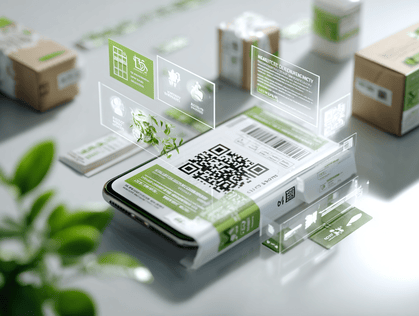October 5, 2022
Transparent Data Thanks to MDM
Everyone is talking about data transparency and is communicated as a unique selling point (USP) by many software manufacturers. In a world full of over and false information, there seems to be a global need to bring clarity to communication and to offer people the opportunity to inform themselves unequivocally and completely about certain things.

Everyone is talking about data transparency and is communicated as a unique selling point (USP) by many software manufacturers. In a world full of over and false information, there seems to be a global need to bring clarity to communication and to offer people the opportunity to inform themselves unequivocally and completely about certain things.
This need arose primarily from a growing awareness among consumers that their purchasing decisions have a direct impact on the environment and also on social and economic conditions shaped by companies' supply and production chains. More and more people therefore feel a growing responsibility and are therefore demanding transparent information about production conditions, sustainability initiatives and product content, to name just a few aspects. For companies, this means that in addition to general product information and associated digital assets, they must also make this information accessible in order to empower their buyers to make well-founded decisions.
The provision of such information is now an important measure for many companies to establish long-term and deep customer relationships – because trust is one of the most important factors for success in today's e-commerce.
What Does Data Transparency Actually Mean?
In addition to topics such as the environment, sustainability or production conditions, data transparency also includes how a company deals with customer data. Data leaks, purchased product reviews, experiences with fraudulent spam emails and the fact that legislators impose strict regulations on the handling of consumer data contribute to consumers being careful today – this applies both to disclosing their own data and to trusting the information they find on the various platforms.
All these developments have meant that brand loyalty is no longer as strong today as it once was. If a company is unable to protect its customer data or communicates inconsistently or not at all about topics that affect consumer values, then consumers are now many times more likely to turn their backs on the brand.
At the same time, companies that have been able to demonstrate a trusting and transparent handling of data and information have the opportunity to use the data that their customers willingly share with them to create better and more personalized customer experiences. As a result, customer loyalty can be strengthened in the long term and companies can use the insights they gain from consumer reactions to create even better products and a targeted customer approach.
But there is also an internal perspective on data transparency. Many different parts of an organization depend on the availability of the same information – whether to make strategic decisions or to effectively solve operational tasks. This availability of accurate, complete and up-to-date information is also known as data transparency and not only enables companies to function efficiently, but thanks to the insights gained from available information, it also forms the basis for innovations and new business models to emerge.
How Do You Create Transparent Data?
So the mission is clear – but how do companies achieve data transparency? After all, in many cases, data is still anything but reliable and available. They are often stuck in various data pots spread across the organization, are redundant and incomplete and are anything but trustworthy. The systems, rules and processes in which the data is processed are also often very different from one another.
However, in order to communicate clearly about products, offers, supply chains and one's own values, it is necessary to connect different types of data. This includes customer data as well as product, location and supplier data. The controlled orchestration of all this data is called Master Data Management (MDM). MDM is therefore a type of higher-level authority that, on the one hand, defines the relevant master data in the company and, on the other hand, sets rules for the necessary data quality. Data quality in turn depends on factors such as accuracy, timeliness, availability, completeness, consistency, compliance and uniqueness. With MDM, companies are able to quickly and reliably assemble and deliver information and then communicate it internally or externally. This allows management to generate reliable reports, consumers receive the necessary information to be able to make their purchase decisions, and communication managers can initiate personalized marketing measures to improve customer experiences and increase the probability of buying.
Strategic Advisory & Effective Execution
We continuously innovate to transform data into competitive advantage via expert advisory, effective project execution, and precision engineering.
Our Blog for Experts.
We use our expertise in various disciplines to turn data into sustainable competitive advantages for our customers and to share our knowledge.
Further News
All the latest news about Advellence
Do you have
Questions?
Make an appointment for a non-binding and free consultation right away!







